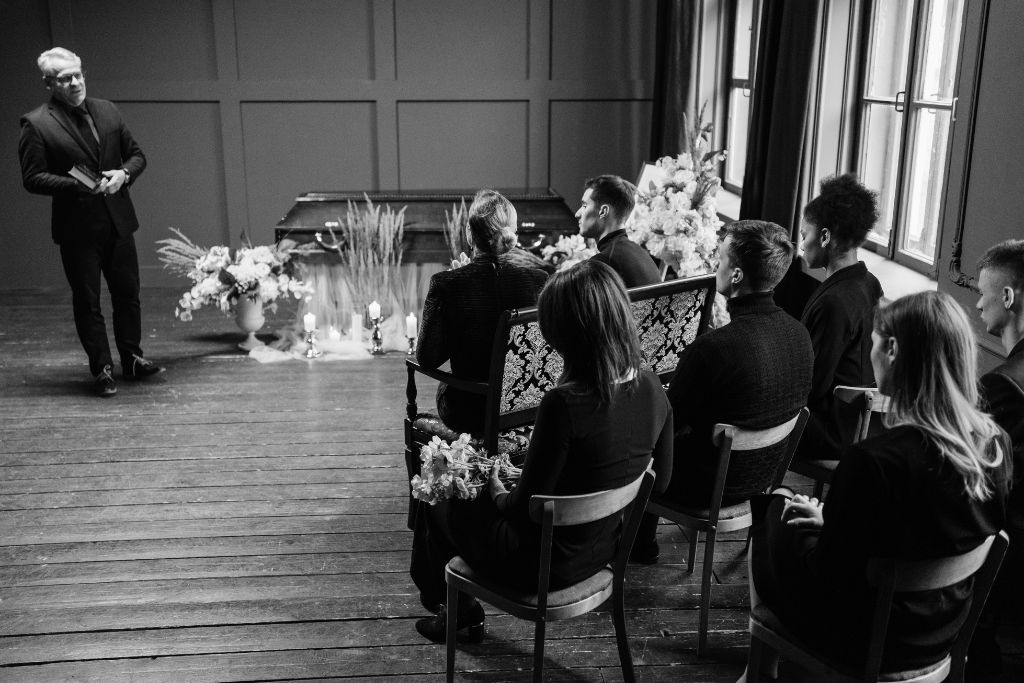Exhumation involves the removal of a body or remains of a deceased person from a grave. It is most often carried out for a specific purpose related to forensic examinations or to relocate and reinter the remains in another place.
Exhumation involves the removal of a body or remains of a deceased person from a grave. It is most often carried out for a specific purpose related to forensic examinations or to relocate and reinter the remains in another place.

Regulations governing the procedure are specified by the Act of January 31, 1959, on Cemeteries and the Burial of the Dead, along with subsequent regulations.It is important to know that exhumation is permitted from October 16 to April 15 and is carried out in the early morning hours. Furthermore, exhumation may only be performed by a specialized funeral home with permission issued by the state district sanitary inspector, under the supervision of the local sanitary inspector, and in agreement with the cemetery management.
Exhumation is most often conducted at the request of the deceased person’s closest family in order to transfer the remains to another place of rest. Exhumation may also be performed due to the renovation of a tomb, change of the designated use of the current cemetery land, or at the request of a court, prosecutor’s office, or the Institute of National Remembrance.Exhumation requested by the family must have the consent of all its members. In disputed matters (for example, concerning grave rights), the decision is made by the court.
Exhumation is possible at any time after burial, provided that formal requirements are met. The restriction applies to persons who died of infectious diseases – in such cases, exhumation is possible only after 2 years have passed.
An application for permission to exhume may be submitted by a person entitled to bury the deceased – most often the closest family. The application is submitted to the state district sanitary inspector or the state border sanitary inspector responsible for the location of the planned exhumation. It must be submitted in person, by mail, or via the ePUAP system. If the application is not signed by all entitled persons, written statements of consent for the exhumation from those persons must be attached.
Every exhumation, especially one carried out before the mineralization period of the body has passed, carries the risk of infection by microorganisms. Therefore, it can only be performed under proper sanitary conditions. Employees of the specialized company conducting the exhumation should use personal protective equipment, and the earth removed from the grave should be placed on a surface protected with an impermeable, durable mat.
If the body or remains are exhumed before 20 years have passed since burial, they are removed together with the coffin – such coffins are not opened but placed in a sealed metal-lined box. After 20 years, the exhumed remains along with coffin fragments are placed in a new coffin.
Exhumation carried out by qualified and properly prepared employees of BONGO International Funeral Services is always conducted with strict adherence to all sanitary regulations and respect for the dignity of the deceased.
It is difficult to clearly specify the costs of body exhumation because the price depends on several factors such as: the form of burial (urn or coffin), the condition and depth of the grave, the location from which the remains are exhumed and the new intended place, fees related to reserving a place in the cemetery, as well as the time elapsed since the burial date.
More information about exhumations carried out by BONGO can be found on our website: https://bongo.com.pl/oferta/ekshumacje/
We perform exhumations on behalf of Families and state institutions worldwide. We invite you to contact our advisors by phone at +48 22 831 00 36 or via email at biuro@bongo.com.pl.
Transport by Country
An independent expert in the funeral industry, author of the blog Celebruj Wspomnienia (“Celebrate Memories”), and editor-in-chief of THANOS magazine — the official publication issued by the World Organization of Funeral Operatives FIAT-IFTA. She has written nearly one hundred articles and conducted dozens of interviews on topics related to trends, marketing, and the sale of funeral services. Katarzyna constantly follows developments in the industry, discovering innovations that transform the way funeral services are perceived. Her unique approach — combining insight, courage, and respect — attracts the attention of both professionals and those outside the field. She collaborates with market leaders, including Grupa KLEPSYDRA S.A.

A funeral, regardless of religion, is an event filled with symbolism and emotion. Although rituals may differ, the common denominator remains respect — for the deceased, their family, and the tradition in which they were raised. It is this respect that forms the foundation of funeral etiquette.

The death of a loved one abroad places the family in a difficult situation. Repatriating the body to the home country is a complex process, both in terms of formalities and logistics, and it also involves considerable costs.

When death occurs outside the place of residence of the deceased or their family — or when the relatives wish to bury their loved one in a different location — an additional challenge arises: transporting the body from one city to another. This task can be efficiently carried out with the support of a professional funeral company.